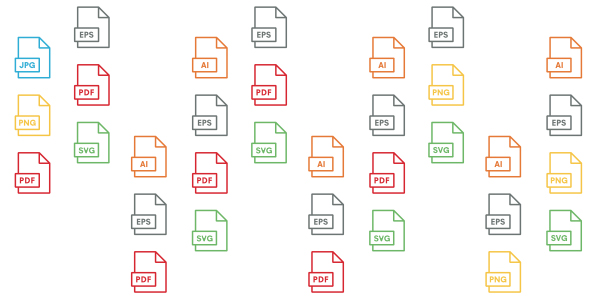Project assets and other visuals are saved out in many different file formats. Understanding these enables our clients correctly save, send, and manage files, but this is not always easy!
Therefore, we have prepared the PDF (= universal file format) below that clearly sums everything up at-a-glance. We have been told that this is a useful reference...
It is always also really useful to understand that all file types can be classified one of two ways:
1. RasterRaster images are made up of pixels, or little squares of colour. The pixels have a defined size depending on the resolution/quality of your image: high resolution has more pixels than low resolution. It is impossible to resize raster images without compromising their resolution/quality if you are moving from a smaller to a larger file.
2. VectorVector images resolve this resizing issue. They are constructed with proportional formulas instead of pixels. A vector image can be made as large as you like without looking pixelated and without compromising the resolution/quality.
https://www.mothandrust.co.uk/files/File-Formats-At-A-Glance.pdf
Et voila!
